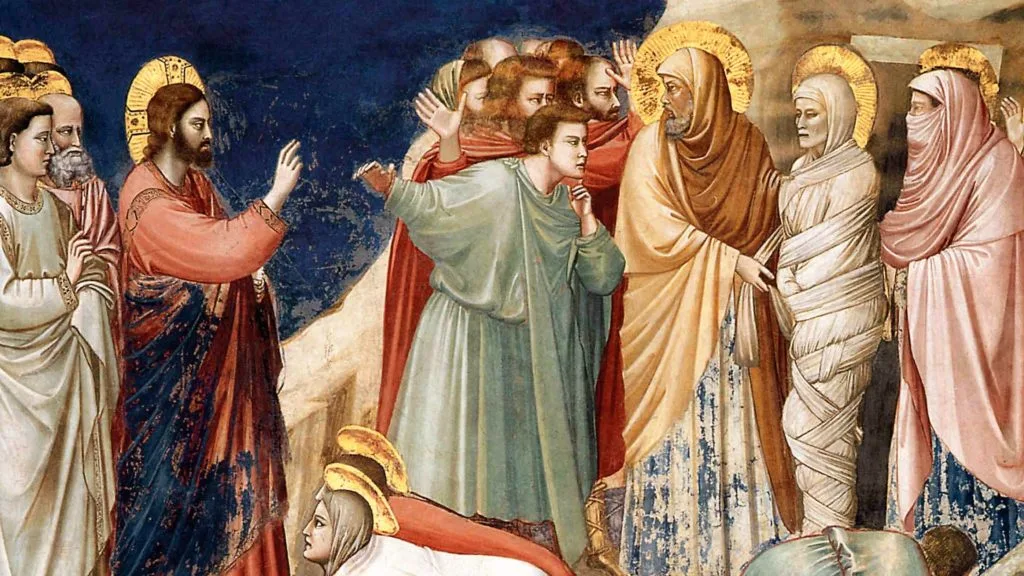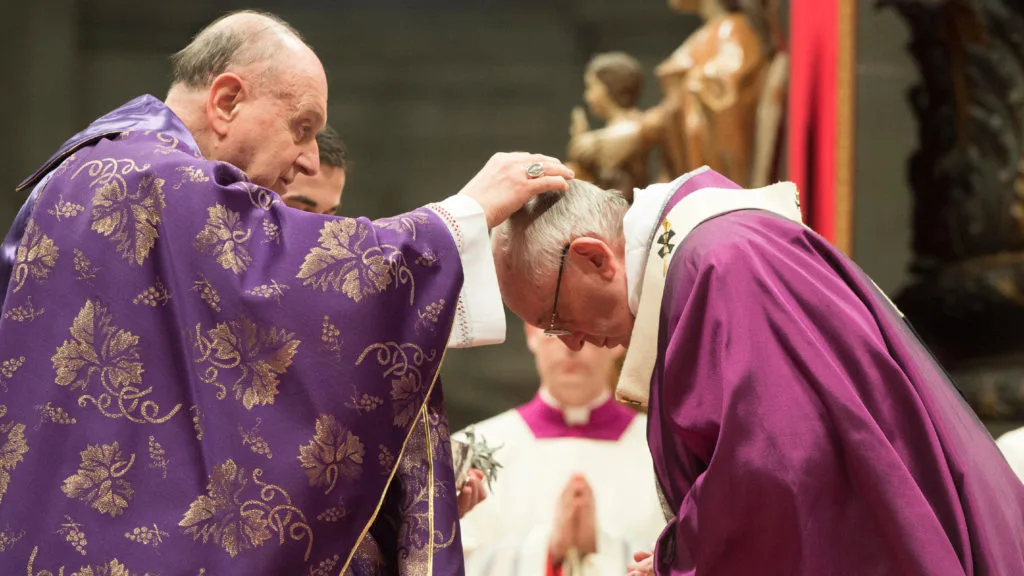POPE FRANCIS AND POPE BENEDICT XVI ON THE RESURRECTION OF LAZARUS.

Pope Francis’ Homily 2014
The Gospel of this Fifth Sunday of Lent tells us of the resurrection of Lazarus. It is the culmination of the miraculous “signs” worked by Jesus: this act is too great, too clearly divine to be tolerated by the high priests, who, learning of the fact, decided to kill Jesus (see Jn 11:53 – ‘From that day onwards they were determined to kill him’). Lazarus had already been dead four days, before Jesus arrived; and what he said to the sisters Martha and Mary is engraved forever in the memory of the Christian community. Jesus speaks like this: “I am the resurrection and the life; he who believes in me, though he die, yet shall he live, and whoever lives and believes in me shall never die”. With this word of the Lord we believe that the life of whoever believes in Jesus and follows his Commandment after death will be transformed into new life, full and immortal. As Jesus is resurrected with his own body, though he does not return to an earthly life, so too will we be raised with our bodies which will have been transfigured into glorified bodies. He is waiting for us with the Father, and by the power of the Holy Spirit, who raised him, he will also raise those who are united to him.
Before the sealed tomb of his friend Lazarus, Jesus “cried with a loud voice: ‘Lazarus, come out!’. And the dead man came out, his hands and feet bound with bandages, and his face wrapped with a cloth”. This decisive cry is addressed to all men, because we are all marked by death, all of us; it is the voice of the One who is master of life and wants that all we all may “have it abundantly”. Christ does not resign himself to the tombs that we have built for ourselves with our choice for evil and death, with our errors, with our sins. He is not resigned to this! He invites us, almost orders us, to come out of the tomb in which our sins have buried us. He calls us insistently to come out of the darkness of that prison in which we are enclosed, content with a false, selfish and mediocre life. “Come out!”, he says to us, “Come out!”. It is an invitation to true freedom, to allow ourselves to be seized by these words of Jesus who repeats them to each one of us today. It is an invitation to let ourselves be freed from the “bandages”, from the bandages of pride. For pride makes of us slaves, slaves to ourselves, slaves to so many idols, so many things. Our resurrection begins here: when we decide to obey Jesus’ command by coming out into the light, into life; when the mask falls from our face — we are frequently masked by sin, the mask must fall off! — and we find again the courage of our original face, created in the image and likeness of God.
Jesus’ act of raising Lazarus shows the extent to which the power of God’s grace can go, and, thus, the extent of our conversion, our transformation. Listen carefully: there is no limit to the divine mercy offered to everyone! Remember this sentence. And we can all say it together: “there is no limit to divine mercy which is offered to all people!”. Let us say it together: “There is no limit to divine mercy which is offered to everyone!”. The Lord is always ready to remove the tombstone of our sins, which keeping us apart from him, the light of the living.
Pope Benedict XVI’ Homily 2008
Dear Brothers and Sisters,
In our Lenten journey we have reached the Fifth Sunday, characterized by the Gospel of the resurrection of Lazarus (Jn 11: 1-45). It concerns the last “sign” fulfilled by Jesus, after which the chief priests convened the Sanhedrin and deliberated killing him, and decided to kill the same Lazarus who was living proof of the divinity of Christ, the Lord of life and death. Actually, this Gospel passage shows Jesus as true Man and true God. First of all, the Evangelist insists on his friendship with Lazarus and his sisters, Martha and Mary. He emphasizes that “Jesus loved” them, and this is why he wanted to accomplish the great wonder. “Our friend Lazarus has fallen asleep, but I go to awaken him out of sleep”, he tells his disciples, expressing God’s viewpoint on physical death with the metaphor of sleep. God sees it exactly as sleep, from which he can awaken us. Jesus has shown an absolute power regarding this death, seen when he gives life back to the widow of Nain’s young son (cf. Lk 7: 11-17) and to the 12 year-old girl (cf. Mk 5: 35-43). Precisely concerning her he said: “The child is not dead but sleeping” (Mk 5: 39), attracting the derision of those present. But in truth it is exactly like this: bodily death is a sleep from which God can awaken us at any moment.
This lordship over death does not impede Jesus from feeling sincere “compassion” for the sorrow of detachment. Seeing Martha and Mary and those who had come to console them weeping, Jesus “was deeply moved in spirit and troubled”, and lastly, “wept”. Christ’s heart is divine-human: in him God and man meet perfectly, without separation and without confusion. He is the image, or rather, the incarnation of God who is love, mercy, paternal and maternal tenderness, of God who is Life. Therefore, he solemnly declared to Martha: “I am the resurrection and the life; he who believes in me, though he die, yet shall he live, and whoever lives and believes in me shall never die”. And he adds, “Do you believe this?” (Jn 11: 25-26). It is a question that Jesus addresses to each one of us: a question that certainly rises above us, rises above our capacity to understand, and it asks us to entrust ourselves to him as he entrusted himself to the Father. Martha’s response is exemplary: “Yes, Lord; I believe that you are the Christ, the Son of God, he who is coming into the world”. Yes, O Lord! We also believe, notwithstanding our doubts and darkness; we believe in you because you have the words of eternal life. We want to believe in you, who give us a trustworthy hope of life beyond life, of authentic and full life in your Kingdom of light and peace. We entrust this prayer to Mary Most Holy. May her intercession strengthen our faith and hope in Jesus, especially in moments of greater trial and difficulty.


